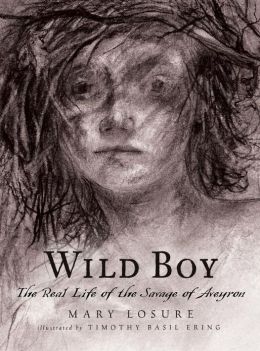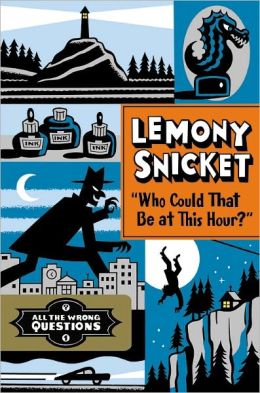
Joining in with Teach Mentor Texts!
I've read a few books this week! One because I worked hard to get it read
during TLA, and the others occurred during bedtime routines and a date night to Barnes and Noble with my handsome/amazing husband.
 The Wild Boy: The Real Life of the Savage of Aveyron
The Wild Boy: The Real Life of the Savage of Aveyron by Mary Losure. Ill. by Timothy Basil Ering
Which readers? 3rd and up
This little book reads like a novel, but the research and careful attention to detail tell the reader the real-life story of the Savage of Aveyron from France in the late 1700s/early 1800s. Losure's obviously meticulous research shows through in the many varied sources that she uses to anchor this story as much as possible. There are many times when she has to make suppositions as the story of this boy's life moves forward, but these are clearly noted. Losure's story follows "Victor" from the forests of France to unhappy institutions and eventually to people who genuinely love him and become family. Losure's afterword also show how the efforts to help this boy affect modern educational pedagogy (i.e., Maria Montessori's methods).
 Bink & Gollie: Best Friends Forever
Bink & Gollie: Best Friends Forever by Kate DiCamillo and Alison McGhee. Ill. by Tony Fucile
Which readers? K and up
Henry (our kindergartener, age 6) and I have a special place in our heart for the
Bink & Gollie series. It's smart, precocious, and just so witty. I'll come straight to the point. This one just really didn't get the same amazed reaction from either of us. I had to explain a lot of things to him. He didn't understand Gollie's brush with royalty in the first chapter at all. The book didn't hold his attention, and he thought it was really very strange that Bink smeared peanut butter on her sculpture made from her recycled Stretch-O-Matic machine. As we progressed through the book, the word that kept flitting through my head was "disjointed." We are still hardcore
B&G fans. We will be the first in line for the next installment. But this third in the series is just no
Two for One.
 October Mourning: A Song for Matthew Shepard
October Mourning: A Song for Matthew Shepard by Leslea Newman
Which readers? Older Middle school +
One of my favorite literature professors from TWU, Dr. Sylvia Vardell, writes a wonderful poetry blog. Every January, she publishes her
"Best Of" poetry list for the previous year. I try to read as many of these as I can. This week, I read
this beautiful book of poetry telling the story of the death of Matthew Shepard from many different viewpoints, such as the bartender who was the last friendly person he talked to, the police officers, his family, the killers, and even the fence post to which he was tied. Newman's poetry is sparse, haunting, and most definitely thought provoking.
 National Geographic Book of Animal Poetry
National Geographic Book of Animal Poetry ed. by J. Patrick Lewis
Which readers? Preschool and up
This is another great selection highlighted on Dr. Vardell's list. This delightful collection is wonderful because of both the poems and the pictures. For some reason, I put off picking up this book for the longest time because it had that National Geographic logo on it. I guess that is because that logo makes it seem a bit like a manufactured series to me, but this is definitely a gem of a poetry collection.

 A Long Way Away: A Two Way Story
A Long Way Away: A Two Way Story by
Frank Viva
Which readers? Preschool and up
I picked up this little picture book last night, and I was immediately grabbed by the unique illustrations that have a nostalgic, retro feel. I gave it four stars on GoodReads....probably influenced by the fact that it has an average of 3.64 stars. (hanging head in shame. Must not let my personal opinion be swayed by GoodReads averages!!!). I have thought of this lovely little book several times today. The colors are so striking, and the unique nature of the book (you can read it forwards...or backwards for a different story!). Then I noticed a
7-Imp blog post via The Niblings on FB about this author and his upcoming book about Frank Lloyd Wright! If you write about FLW, you have my full attention. Frank Viva is now officially on my watch list! High honors. haha.
What am I reading next? Oh, I just don't know! Too tired after TLA and a family visit this weekend! Will decide tomorrow (writing this on Sunday night). I have
The Whizz Pop Chocolate Shop and
The Quilt Walk among about 10 others in my book bag.
























